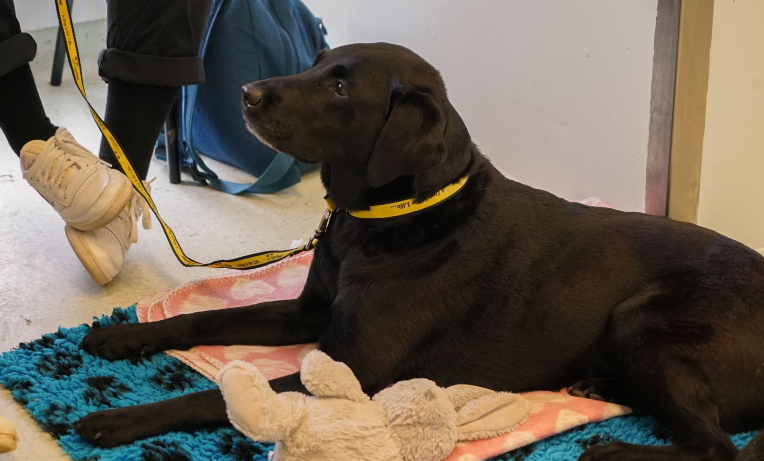Standing up for the veterinary profession
08 Aug 2024
14 Apr 2023 | Tamsin Durston
A little bit of canine behaviour knowledge can go such a long way! In this blog, Tamsin Durston, Veterinary Intervention Development Manager at Dogs Trust, shares some top tips for creating a ‘dog-friendlier’ clinic.

It might not surprise you that over a third of owners reportedly believe their dog ‘hates going to the vet’ (1), with an observed 13% of dogs refusing to enter (2). And given the waiting room is highlighted as an area where dogs are particularly likely to display ‘extreme stress’ (3), no wonder they often appear well beyond coping by the time you’re examining them. The experience of canine distress, fearfulness, and frustration – and the knock-on effect on owners and vet teams – can make the provision of veterinary care incredibly challenging.
To help every veterinary professional have all the essential information they need about canine behaviour, Dogs Trust and the British Veterinary Behaviour Association set up the Dog Friendly Clinic Scheme in March 2023. Our website has lots of information on how to improve the experience of dogs in your practice, whether you’re looking to sign-up to the Scheme or just make a couple of tweaks to your layout and processes. To get you started here are a few tips to make your clinic more dog-friendly:
Learn about dog body language
The better veterinary professionals are able to understand the way a dog is communicating with them, the better we are able to respond in ways which help dogs to feel safe in our presence and begin to develop trust in us. Dog body language can be very subtle, but by learning how to recognise very subtle early indicators that a dog is becoming worried means, we’re able to provide reassurance and prevent this feeling from escalating to panic, risking aggressive or suppressed behaviour.
Give dogs space
Dogs naturally like to give unfamiliar dogs a wide berth and avoid eye contact rather than approach directly, so think about how best to create protected spaces where dogs can feel safely out of ‘unsolicited interaction distance’ from any unfamiliar dog or person also present. This might mean moving waiting room chairs back-to-back or positioning portable screens to apportion the space you have. Encouraging owners to bring blankets which smell of home can also help dogs to feel a little safer here.
Use a low-stress handling approach
Dogs feel safe when they can predict what will happen and when, and when they have been able to explore and acclimatise to any new environment, especially one which can be so very sensorily consuming. If you don’t need to lift them up, then examining dogs on the floor means they’re unlikely to feel quite as vulnerable as they might on a tabletop – where they’re unable to avoid interaction. Observe their body language response to being examined and allow them to move away if they wish, examining them systematically and incrementally. The ‘three second rule’, where you place your hands on them for just a moment at a time, then take a break, then recommence for another brief moment, and so on, allows them time to process this undertaking and feel their communication is acknowledged.
Resist the puppies and provide a positive experience especially for them
Resisting interacting with puppies, especially in the waiting room, can be very hard because they are so irresistible, but puppies can very quickly become overwhelmed with unsolicited interaction from humans, however well-intended. Admiring them from afar allows them time to settle without learning to anticipate sudden, unavoidable physical interaction. Likewise, because their first few visits generally involve needles, providing ‘confidence clinics’ where owners can bring puppies to enjoy settling with a snuffle or lick-y mat in the waiting room, then exploring the consult room and weighing scales for nothing but tasty treats, can help them build a positive association with the veterinary environment.
Ask owners about their dog’s behaviour
Physical and emotional health are inextricably linked, and likewise, pain can also affect behaviour. Owner-reported behavioural changes might be the first indication of a sub-clinical condition, so always including behaviour-related questions enables veterinary professionals to provide behavioural first aid to aid safety for all and prevent situations from escalating, as well as signpost to accredited training and behaviour professionals where professional support is needed. Likewise, recording a behavioural history can also be an invaluable part of every consultation or client interaction, helping identify behavioural patterns and concerns throughout a dog’s life.
For more information on the Scheme and tips to help your practice, visit our website.
Get tailored news in your inbox and online, plus access to our journals, resources and support services, join the BVA.
Join Us Today